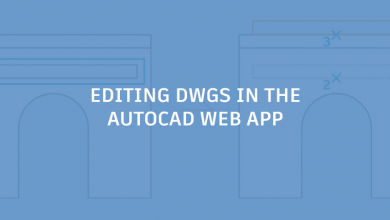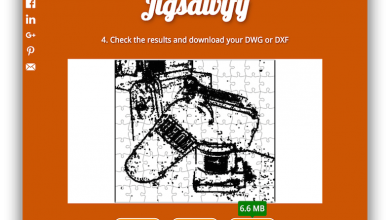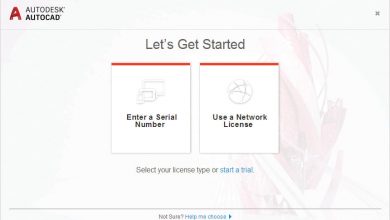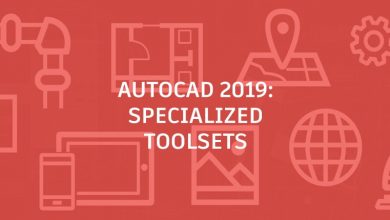
In part one of our series on conducting a process assessment for AutoCAD, we talked about the importance of beginning with a plan. Central to that plan was none other than defining your objectives.
The goal in defining your objectives is to determine where you’re going to look—not what you’re looking for. When doing such an exercise myself, I typically begin by looking at how my organization defines the role of CAD management.
For example, in my role at Timmons Group, we define CAD management as the intersection between people, process, and technology. As I begin any assessment exercise in my firm, I’m ultimately thinking about those three pillars at every step of the process.
Nonetheless, however you’ve defined your plan, it’s time to begin the assessment. But where do we start?
Contents
Step 2: Collect Information
As the purpose of an assessment is to help eliminate blind spots, it should be no surprise that, after planning, our first step is to gather information. My experience has shown the more ways you give your team to contribute, the more accurate the final observations of your process assessment will be. For the most accurate outcomes, you’ll want to combine a mix of both synchronous and asynchronous information-gathering methods.
At this stage, the biggest mistake I see is that the person conducting the assessment forgets that they’re there to collect, not disseminate information. This is the time for your team to talk and share, not you. You will have plenty of time to speak and communicate information during the assessment process—this is not it!
Information Collection Methods
Recognizing the uniqueness of every organization, you should select the information gathering methods that best align with its culture. Your goal is to do everything you can to meet your teams where they are, not the other way around. Although not all these collection methods may be a fit for your organization, some of the techniques I most commonly utilize include:
Pre-Interview Survey
Based on the objectives defined in my planning stage, I’ll design an online survey that will allow me to drill down into my focus areas. While it’s crucial to keep survey responses anonymous, you’ll also want to build in questions that will allow you to segment the responses.
For example, I typically include several non-identifying grouping questions in the surveys I design. These usually include questions about how many years of experience a respondent has; how many hours per week they use AutoCAD; and the type of position they hold in the organization (production, project management, or leadership/management staff).
Apart from giving yourself the ability to anonymously segment responses, my principal rule of survey design is to know why you ask every question. Don’t add questions for the sake of having questions, have a purpose for every question.
Building upon that, anchoring questions with other questions is another critical strategy I implement into the surveys I design. Assessing skills is an excellent example of this. Specifically, I like to ask respondents to rank their own skills and then how they perceive the skills of others on their team. While there are exceptions, people often overestimate their own skills while underestimating the skills of others. The truth is typically somewhere in the middle, and having both types of questions can help you objectively find that middle ground.
Project Review
Performance issues are among the most common observations identified in the assessments I’ve conducted. They’re often the compelling event triggering the assessment process to begin with. The trouble with performance issues is their root cause could be any number of things. It could be a measure of insufficient hardware, out-of-date software, the way teams build and structure their projects, or some other magical combination of circumstances.
In that way, nothing matches the insights one can gain from studying the DWG files that combine to form a project when conducting an assessment. Studying an actual project, you can begin to see whether performance issues are a matter of hardware or poor data management practices. You can similarly see to what extent your organization’s CAD standards are followed along with many other similar insights.
While it’s premature to establish any conclusions at this stage, it’s entirely reasonable to begin identifying trends and constructing questions around those trends. A key goal in the pre-interview survey and project review is to help educate yourself about what teams are actually doing so you can have more constructive conversations with those very teams during the interview stage.
In-Person Interviews
Leveraging the foundational information gained from the online survey and project review, you’ll want to have face-to-face interviews with teams to help clarify your early observations. When conducting these interviews, it’s important to remember they are interviews. At this moment, your role is to observe, not solve.

Remember, you have two ears and one mouth for a reason. In that way, most of your dialogue should be structured as questions and not statements.
Apart from your questioning strategies, there’s also the consideration of who to interview. You can choose to structure this in many ways. However, the approach I have found most successful is to group individuals by role, not team. For example, grouping production staff together allows that conversation to be more technical. In contrast, grouping project managers together will enable that conversation to be more client-focused.
When planning in-person interviews, I’ll typically work to schedule no less than three series of interviews. First with my production staff (the people using the software), then with my project management staff, and finally with my organization’s leadership. Each of these audiences will have different perspectives that often have overlap but are often articulated in very different ways.
For example, a project manager might share they have a tough time maintaining project budgets because of how long their teams spend waiting on AutoCAD to do things. Your production staff might share individual drawings aren’t too bad but plotting project drawings takes forever. Are these two things related? You’ll make that determination in the analysis stage of the assessment. However, what’s important is you’ve heard what might be the same problem articulated in a technical manner from your production staff and as a business outcome from your project managers. Had you interviewed both groups together, you would have either gotten one of those responses, not both, or an unintelligible aggregate of the two.
How to Collect Information
Whatever information collection methods you choose, the question remains how do we physically collect information? What are the tools of the trade?
I’ll turn to an online survey tool that allows me to filter and segment information for my pre-interview surveys. My go-to tools for this are SurveyMonkey and Microsoft Forms. You’ll likely find SurveyMonkey has more robust tools. Still, Microsoft Forms has the advantage of being a tool you probably already own as part of your Microsoft 365 subscription.
Beyond that, much of the information-gathering stage is about taking notes. While regular pen and paper are perfectly sufficient, I prefer a digital note-taking tool for process assessments. A primary reason for this is I tend to type faster than I can write, and I don’t have to worry about the legibility of my handwriting the quicker I write things down. I similarly find it easier to reference digital notes as I begin leveraging them during the analysis stage.

While there is no shortage of digital note-taking tools on the market today, as a Microsoft Windows user, my go-to tools are Microsoft OneNote and Evernote. Both are equally capable tools, and which one is best primarily comes down to personal preference. Ultimately, I suggest choosing the most ubiquitous tool at your company so you can take advantage of the collaboration features each offers with colleagues.
Regardless of the tools you choose, the information collection stage of your assessment should yield a mountain of data. Right now, that information is both unstructured and in what most would probably call a state of chaos. If that describes what you have at this stage, good news!
You’re doing it right.
A chaotic pile of unstructured notes, generally unintelligible and probably laten with typos, indicates that you collected data without predetermined outcomes. It’s a sign you recorded information as it was shared, in the authentic way it was shared.
Candidly, the more organized your notes at this stage, the more you probably approached the assessment with predetermined outcomes. Thus, if you look at your raw notes and see a lot of order, take a step back now and ask yourself what gaps did you miss? What questions didn’t you ask? What answers didn’t you ask a follow-up question to?
If that’s you, give yourself permission to answer those questions honestly before moving on.
Of course, once you feel confident about the information you’ve collected, it’s time to move on to the next step. That next step is the topic of the next post in this series, and is the process of bring order to the chaos you have currently. During that step you’ll analyze what you learned, and find the taxonomical structures laced throughout.
Source: Autodesk







